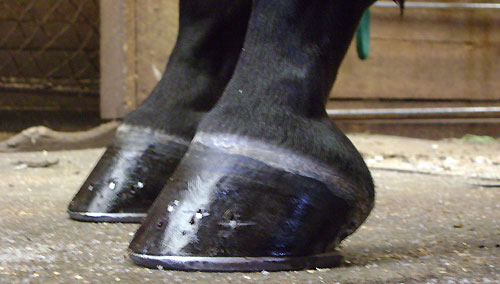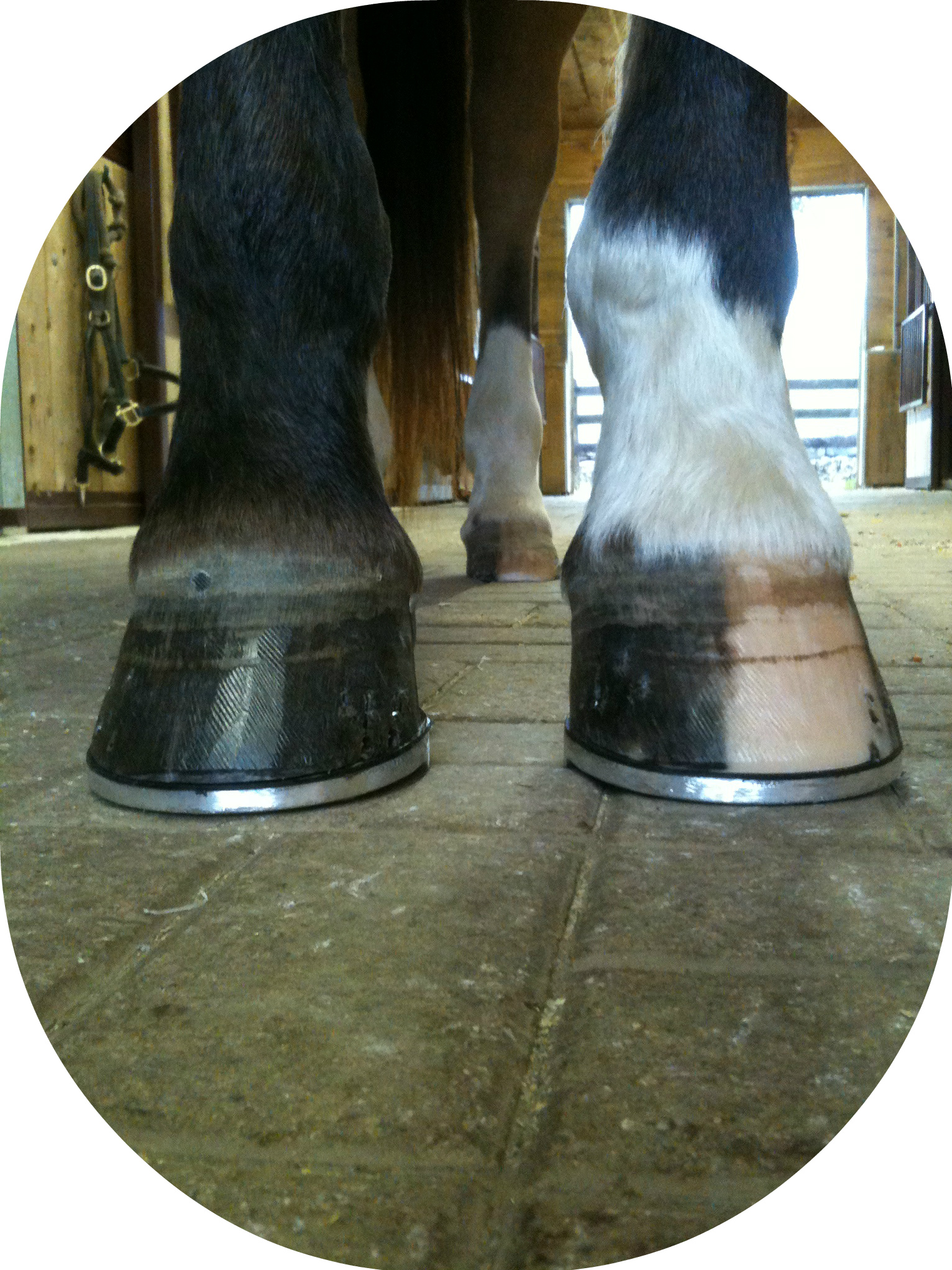Horseshoeing – Correct Shoeing for Veterinarians and Owners
Correct Shoeing – Veterinarians & Owners
By: © J. Scott Simpson
Contact us for a no obligation insurance quote today.
Correct Shoeing – Veterinarians & Owners:
Quite often an owner, trainer, farrier or veterinarians will fall heir to a horse that is completely awry as far as training or shoeing is concerned. Evaluating the problem requires the establishment of a K.D.P., or known datum point as it is known to surveyors. The K.D.P. is actually a compilation of all that you know about the horse at this specific point in time. The more information you can formulate, the more accurate your training and/or shoeing program will be. The K.D.P. is the basis for the need to keep records of shoeing and training. Recording the K.D.P. of a fresh shoeing job entails certain key points. Aside from the usual observations of way of standing and going, several things need to be carefully noted. The balance of the foot preparation, the length of the toes and the angle of each foot need to be recorded. Style and weight of the new shoes as well as any accessories added to the shoe should be noted as well. Prior to a fresh shoeing job, observing the wear of the old shoes can add a great deal of information to your K.D.P. Uneven side wearing and position of the wear of break over are useful aides in establishing an accurate set of records.
Some horses have been so jammed around in their shoes that it is difficult to tell if the shoeing is helping or hindering the animal. Should a horse come within your stewardship carrying an unusual amount of excess baggage in the form of unnatural balance and/or exotic horseshoes, the farrier and trainer will have some decision making to do. Unless the horse had come with a manual of shoeing and training and instruction, the K.D.P. must be evaluated from what you see.
If the trainer or owner is totally satisfied with the way the horse performs, it will be important to critically emulate the previous work. If there is room for improvement, get back to good, sound basic shoeing and design a sensible program from that point. These same principles will apply when first placing young horses into a shoeing and training program. The following is an evaluation of elemental horseshoeing.
HORSESHOEING EVALUATION
Foot preparation:
The frog: Trimming of the frog should be done to sufficiently restore shape to the horny structure. (Horny frog should resemble sensitive frog. ) All diseased portions of the frog should be removed. As much healthy tissue as possible should be retained. On rare occasions the frog may be over-sized and need to be reduced in size.
The bars: The bars are extensions of the hoof wall and should be shaped to allow some weight bearing. Desirable shape is level with the ground surface at the outer perimeter of the heels, tapering to be the level of the sole at the apex or anterior ends. Bars should not be trimmed below the level of the sole. Protruding bars can cause compression of the internal laminae leaves which form them. This can result in internal bruising which may predispose the foot to corns.
The sole: The amount of surplus sole which should be removed is relevant to the amount of excess growth and sometimes the activity of the horse. Normally, sole is removed in the toe hemisphere of the foot until it becomes shiny or glossy in appearance. Dead sole is usually flaky and contains many fissures. Once enough sole has been removed, the cracks or fissures will be less apparent. The sole to the rear of the toe should blend smoothly to sole of the toe wall. The sole should be concaved below the boarder of the hoof wall. Remember: the wall is the primary weight-bearing structure.
The wall: The hoof wall should be trimmed to just above sole level at the toe. The amount of wall trimmed at the heel should be proportional to the amount off of the toe. The proportion is considered correct when both feet are weight bearing and are neither broken forward nor broken back. (P1, P2, and P3 are in alignment.) In most cases, the hoof wall should contact the ground with the medial and lateral sides making even contact. The proximal or upper 2 inches or the hoof wall dictates its natural slope.
All dishes or flares should be removed until they become part of this natural slope. Remodeling of abnormally flared or shaped feet is a commendable practice. There is a lot of strong prejudice against this procedure because it involves vigorous rasping of the outer hoof wall. This way of thinking is outdated and should be discouraged. All sharp edges at the distal border of the wall should be removed and slightly rounded.
Shoes:
Shoes should be selected to suit the activity of the horse. Normally, shoes are for the purpose of protection of the feet and support of the limbs. The most common error made by inexperienced or careless horseshoers is the use of shoes which are too small. The shoe should be as light as practical, but wide enough to offer sufficient protection to the bottom of the foot. The fit should be exactly to the perimeter of the foot at the toe and quarters. Correct Shoeing means the shoe should fit slightly wider than the foot near the heels. (Approximately 1-1/2″ of the heel of the shoe.) This is called expansion and the amount of expansion ranges from 1/16″ – 3/16″.
On front feet, the shoe should at least be large enough to cover the buttress of the heels. On horses with underrun heels, the shoe may need to extend past the buttress of the heels as much as 1/2″. This provides additional support to the flexor tendons and suspensory ligament.
On most hind feet, the fit will be the same as front feet except that it is desirable for the heels of the shoes to extend beyond the buttress of the heels 1/8″ – 1/4″. This provides support and protection to the bulbs of the heels while the horse is stopping or turning. If a horse has a deformed or broken off edge on the hoof wall, it is proper to fit the shoe full in this area where the foot should be.
Nailing: For most activities, six nails should be sufficient to attach the shoe to the foot. Eight nails may be used on horses to be used in rough terrain or are troublesome about keeping shoes on. Height of the nails should be no lower than 3/4″ above the shoes and no higher than 1″. High nailing is preferred by most professional farriers. On some feet nails driven above 1″ may be desirable for secure nailing.
Clinching and Finishing: Clinches should be square in shape, embedded in the wall and smooth to the touch. The outer hoof wall should be smooth to the touch and free from coarse rasp marks. The periople at the hairline should be undisturbed.




